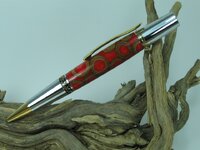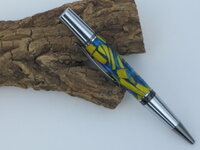Quality Pen
Member
I only see Alumilite used for these neat blanks using objects like pine cones and "junk" wood etc. But can you use PR?
I have yet to cast my own blank, but it seems like PR is easier to learn on plus it is significantly cheaper.
Thanks.
I have yet to cast my own blank, but it seems like PR is easier to learn on plus it is significantly cheaper.
Thanks.



